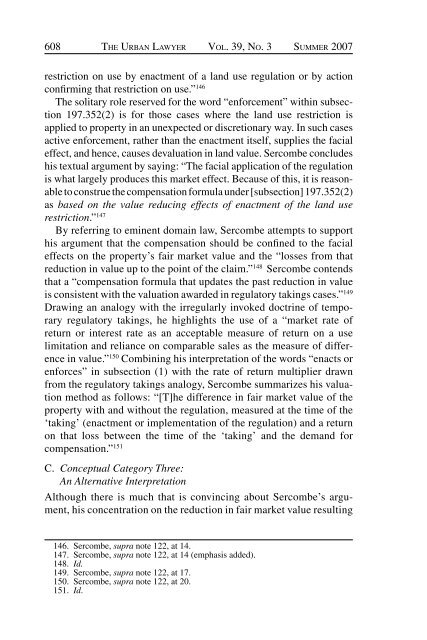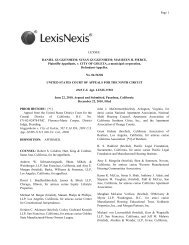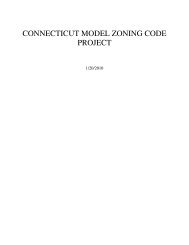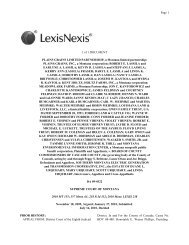Through a Glass Darkly: Measuring Loss Under ... - Land Use Law
Through a Glass Darkly: Measuring Loss Under ... - Land Use Law
Through a Glass Darkly: Measuring Loss Under ... - Land Use Law
Create successful ePaper yourself
Turn your PDF publications into a flip-book with our unique Google optimized e-Paper software.
608 THE URBAN LAWYER VOL. 39, NO. 3 SUMMER 2007<br />
restriction on use by enactment of a land use regulation or by action<br />
confirming that restriction on use.” 146<br />
The solitary role reserved for the word “enforcement” within subsection<br />
197.352(2) is for those cases where the land use restriction is<br />
applied to property in an unexpected or discretionary way. In such cases<br />
active enforcement, rather than the enactment itself, supplies the facial<br />
effect, and hence, causes devaluation in land value. Sercombe concludes<br />
his textual argument by saying: “The facial application of the regulation<br />
is what largely produces this market effect. Because of this, it is reasonable<br />
to construe the compensation formula under [subsection] 197.352(2)<br />
as based on the value reducing effects of enactment of the land use<br />
restriction.” 147<br />
By referring to eminent domain law, Sercombe attempts to support<br />
his argument that the compensation should be confined to the facial<br />
effects on the property’s fair market value and the “losses from that<br />
reduction in value up to the point of the claim.” 148 Sercombe contends<br />
that a “compensation formula that updates the past reduction in value<br />
is consistent with the valuation awarded in regulatory takings cases.” 149<br />
Drawing an analogy with the irregularly invoked doctrine of temporary<br />
regulatory takings, he highlights the use of a “market rate of<br />
return or interest rate as an acceptable measure of return on a use<br />
limitation and reliance on comparable sales as the measure of difference<br />
in value.” 150 Combining his interpretation of the words “enacts or<br />
enforces” in subsection (1) with the rate of return multiplier drawn<br />
from the regulatory takings analogy, Sercombe summarizes his valuation<br />
method as follows: “[T]he difference in fair market value of the<br />
property with and without the regulation, measured at the time of the<br />
‘taking’ (enactment or implementation of the regulation) and a return<br />
on that loss between the time of the ‘taking’ and the demand for<br />
compensation.” 151<br />
C. Conceptual Category Three:<br />
An Alternative Interpretation<br />
Although there is much that is convincing about Sercombe’s argument,<br />
his concentration on the reduction in fair market value resulting<br />
146. Sercombe, supra note 122, at 14.<br />
147. Sercombe, supra note 122, at 14 (emphasis added).<br />
148. Id.<br />
149. Sercombe, supra note 122, at 17.<br />
150. Sercombe, supra note 122, at 20.<br />
151. Id.<br />
ABA-TUL-07-0701-Sullivan.indd 608<br />
9/18/07 10:43:45 AM







